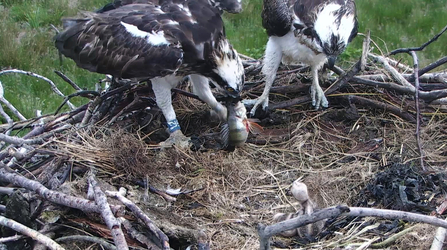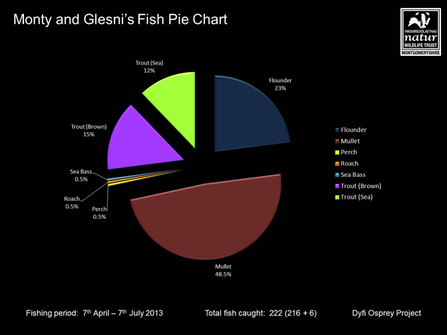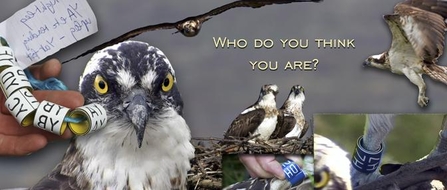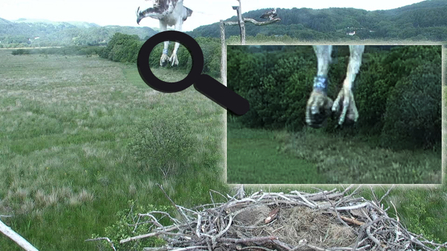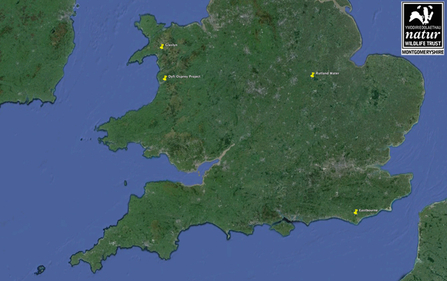Both chicks are doing great. The eldest chick is nine days old today and the youngest exactly a week. Happy Birthday!
Thankfully, the Goldilocks weather that we had hoped for did arrive. Yes we had some rain but overall it wasn't too wet, cold, hot or dry. Perfect for a young osprey family who are at their most vulnerable when they are very young, just like any other living organism.
Two little ospreys, just starting out in life..


